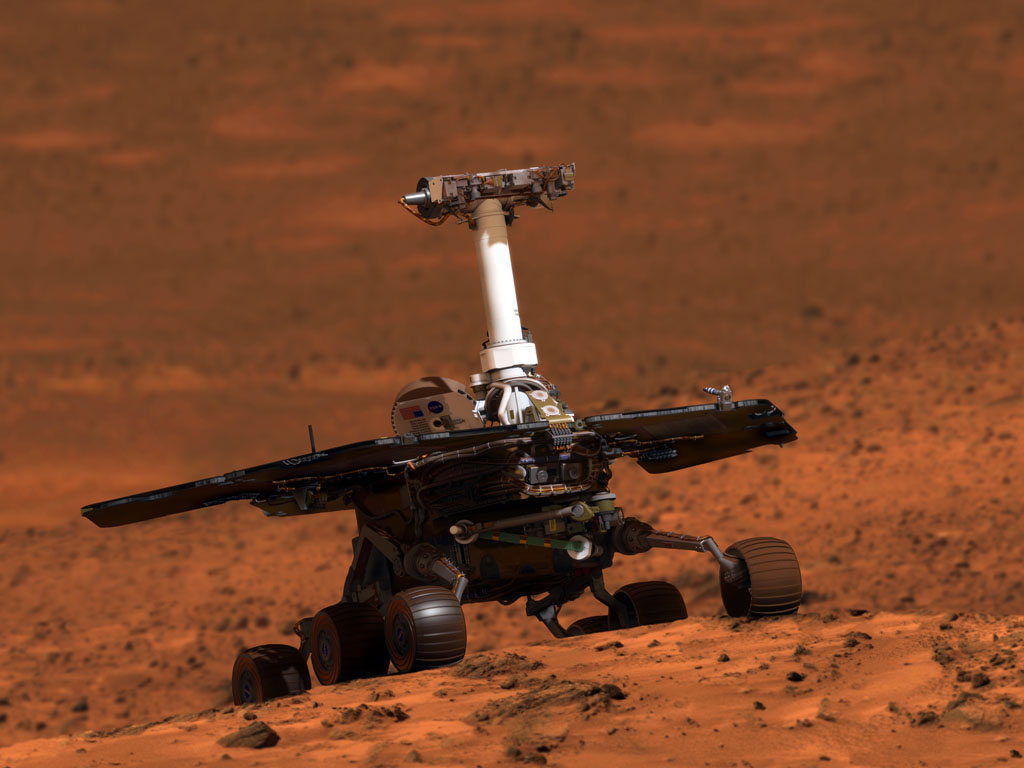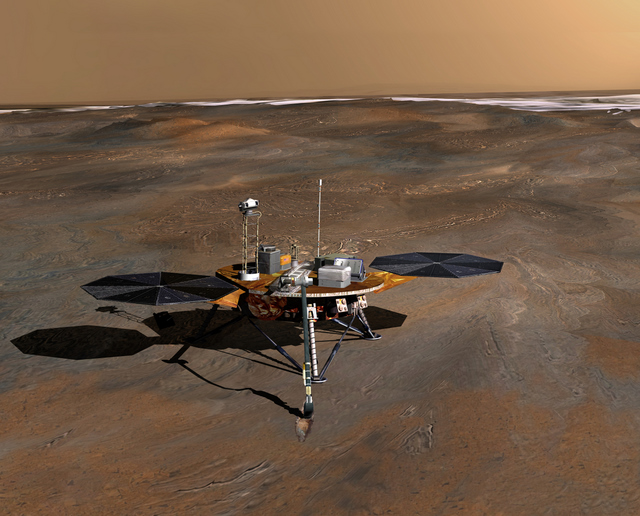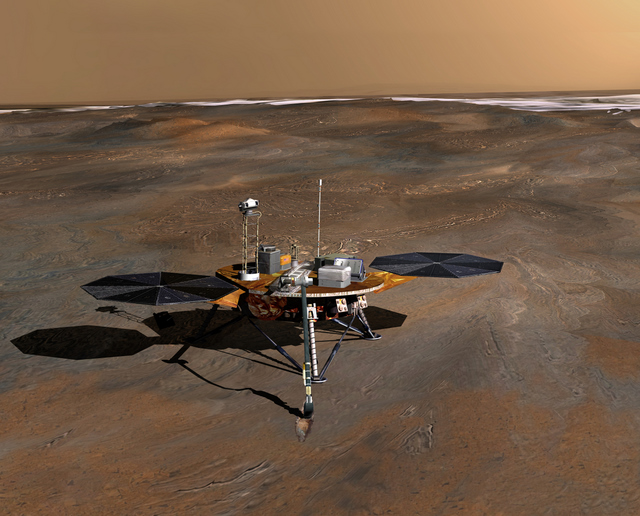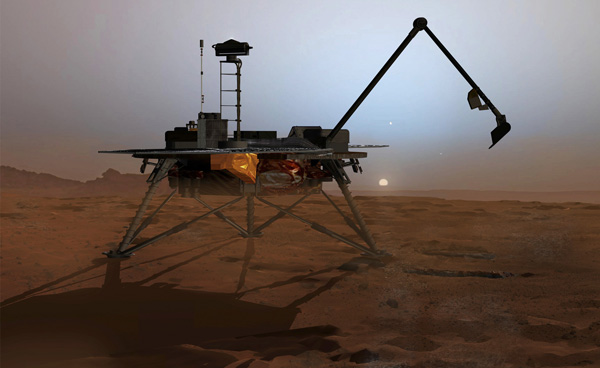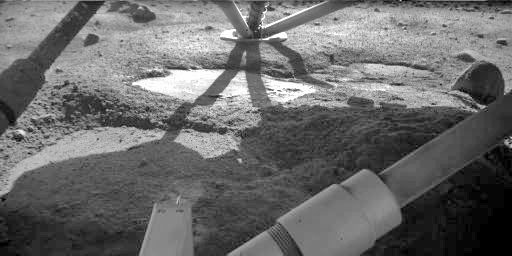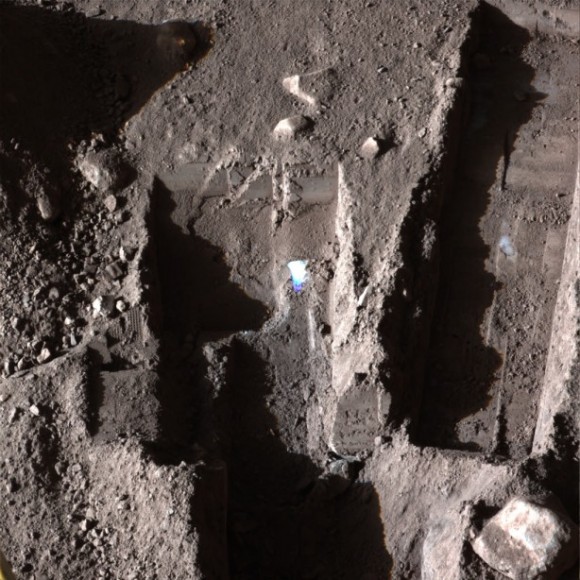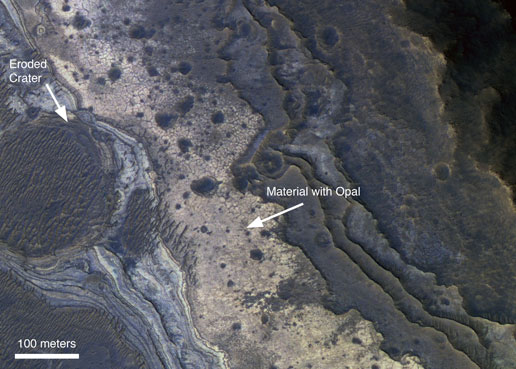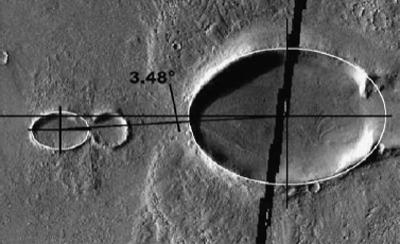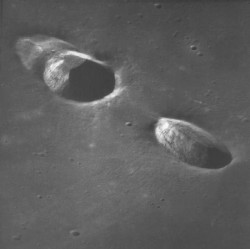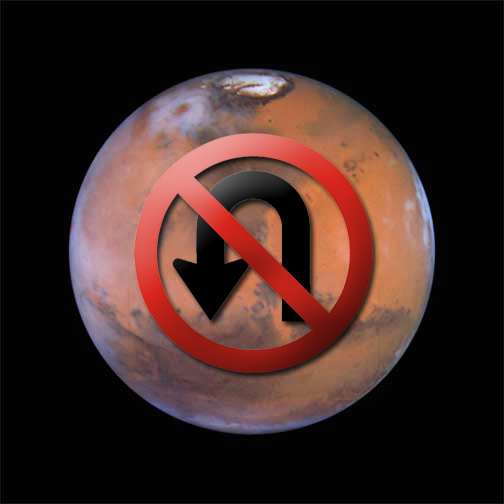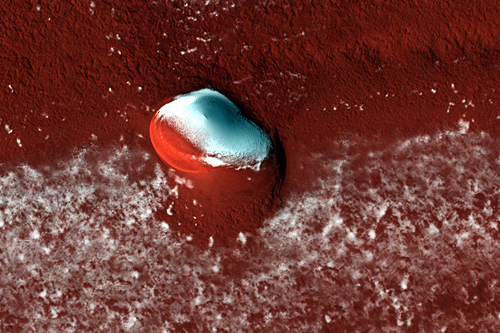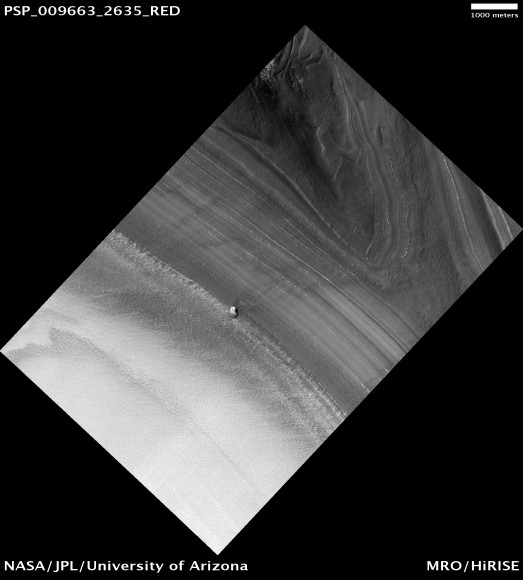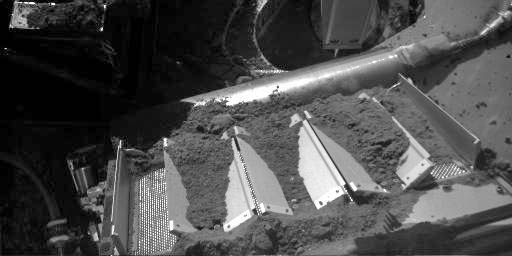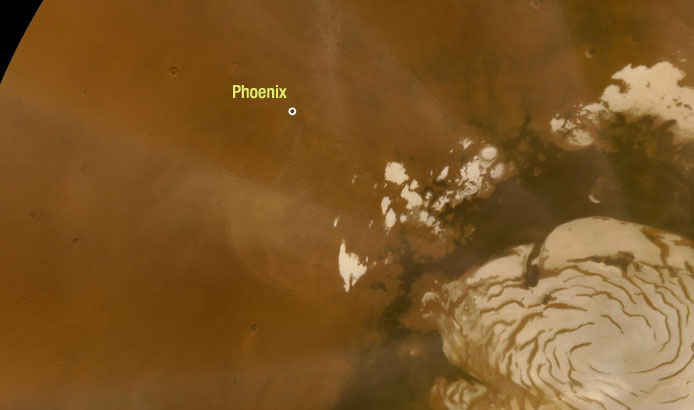[/caption]Commenting on the strategy for the exploration of Mars, Buzz Aldrin, second man on the Moon and tireless space exploration advocate, has said that he believes the first explorers of the Red Planet should stay there. Following similar lines of the first European pioneers who settled in America, a small group of interplanetary explorers should expect to land, build, live and retire (probably even die) on Mars.
Setting up home on the Martian surface will be no easy thing (after all, the atmosphere is 100 times thinner than the Earth’s and the planet has no magnetic field to protect colonists from the ravages of solar radiation), but Mars offers far greater potential as a habitable world than any other Solar System option.
40 years after Aldrin landed on the Moon, one can understand his frustration that there is no current manned space exploration program leaving Earth orbit. Perhaps a pioneering effort to Mars will make all the difference – if we succeed there, who knows where it might lead…
The subject of sending a manned expedition to Mars has always been a controversial one. Who do we send? How long should the mission last? Is sending one explorer an option (it would certainly be cheaper)? Do we make plans for a return mission? What about the health risks? Do we set up a human colony in the first instance? Is it REALLY worth the effort and money? But whether you like it or not, mankind will always have the urge to venture beyond Planet Earth and colonize other worlds (whether the funding or political will is there or not, but that’s another story).
But how can it be done? There has been much speculation about the future of Mars exploration, and we are beginning to take the first baby-steps toward the ultimate goal – a manned mission. The Phoenix Mars lander is classed as a “scout mission” intended to aid the planning of future colonies; satellites such as the Mars Reconnaissance Orbiter (the clue is in the name – you have to do a bit of reconnaissance before sending in the troops!) has the The Compact Reconnaissance Imaging Spectrometer for Mars (CRISM) on board with the primary task of finding mineral deposits on the surface that might be of use to a manned settlement. Every mission we send to the Red Planet has some function to aid the planning of a future human presence on the Martian surface.
As if commenting on his personal experience of the Apollo Program, Buzz Aldrin has shared his views on manned exploration of Mars. As any manned spaceship could take up to 18 months to travel to Mars, Aldrin believes it makes more sense for the first mission to be a one-way trip. “That’s why you [should] send people there permanently,” said Aldrin. “If we are not willing to do that, then I don’t think we should just go once and have the expense of doing that and then stop.”
“If we are going to put a few people down there and ensure their appropriate safety, would you then go through all that trouble and then bring them back immediately, after a year, a year and a half?” Buzz added.
Currently, NASA and the European Space Agency has tentatively said they are planning for a trip to Mars by 2030 or 2040. The current idea is to send a small group of explorers (possibly six individuals) to Mars, but have all the life support systems and supplies already set up on the surface before they arrive. Once an outpost is established, more colonists can be sent out to join them. The first operational manned colony will probably be 30-strong.
 However, these colonists will need to be unique individuals. “They need to go there more with the psychology of knowing that you are a pioneering settler and you don’t look forward to go back home again after a couple a years,” Aldrin said. But that’s not to say they’ll never return to Earth. Years down the line, there may be the opportunity for a return mission, depending on technological advancements. “At age 30, they are given an opportunity. If they accept, then we train them, at age 35, we send them. At age 65, who knows what advances have taken place. They can retire there, or maybe we can bring them back.”
However, these colonists will need to be unique individuals. “They need to go there more with the psychology of knowing that you are a pioneering settler and you don’t look forward to go back home again after a couple a years,” Aldrin said. But that’s not to say they’ll never return to Earth. Years down the line, there may be the opportunity for a return mission, depending on technological advancements. “At age 30, they are given an opportunity. If they accept, then we train them, at age 35, we send them. At age 65, who knows what advances have taken place. They can retire there, or maybe we can bring them back.”
Many will argue that a manned mission to Mars is a “waste of money,” after all, why go through the expense and risk of sending humans when robots can do the same job. Aldrin disagrees with this stance, pointing out that it makes more sense to have humans on the ground, making on-the-spot decisions. I would argue that robotic explorers can only achieve so much; we can send the most advanced analysis equipment on board the most advanced robot, but there is no substitute for human ingenuity and experience. Far more science can be done on the Martian surface by an astronaut rather than a remote controlled robot. If life really does exist on the Martian surface, a man on Mars will find it far quicker than any rover.
Why else send man to Mars? To “do things that are innovative, new, pioneering,” rather than letting manned space flight continue to be a disappointment, Buzz added. After all, the International Space Station hasn’t lived up to many expectations, and the last time we walked on the Moon was in 1972… perhaps we need to start making some bold moves in the direction of Mars before we can consider ourselves to be a space faring race.
Source: Physorg.com

